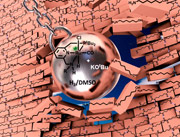Publication
917
J. Am. Chem. Soc., 142 (33), 14267-14275, 2020
DOI:10.1021/jacs.0c05675
|
|
|
|
|
|
|

|
Hydrogenative Depolymerization of Nylons |
|
|
|
|
Amit Kumar, Niklas von Wolff, Michael Rauch, You-Quan Zou, Guy Shmul, Yehoshoa Ben-David, Gregory Leitus, Liat Avram, and David Milstein
Université de Paris, Laboratoire d’Electrochimie Moléculaire LEM, CNRS, 75006 Paris, France
Department of Organic Chemistry, The Weizmann Institute of Science, Rehovot 76100, Israel
Department of Chemical Research Support, The Weizmann Institute of Science, Rehovot 76100, Israel
The widespread crisis of plastic pollution demands discovery of new and sustainable approaches to degrade robust plastics such as nylons. Using a green and sustainable approach based on hydrogenation, in the presence of a ruthenium pincer catalyst at 150 °C and 70 bar H2, we report here the first example of hydrogenative depolymerization of conventional, widely used nylons and polyamides, in general. Under the same catalytic conditions, we also demonstrate the hydrogenation of a polyurethane to produce diol, diamine, and methanol. Additionally, we demonstrate an example where monomers (and oligomers) obtained from the hydrogenation process can be dehydrogenated back to a poly(oligo)amide of approximately similar molecular weight, thus completing a closed loop cycle for recycling of polyamides. Based on the experimental and density functional theory studies, we propose a catalytic cycle for the process that is facilitated by metal–ligand cooperativity. Overall, this unprecedented transformation, albeit at the proof of concept level, offers a new approach toward a cleaner route to recycling nylons.. |

